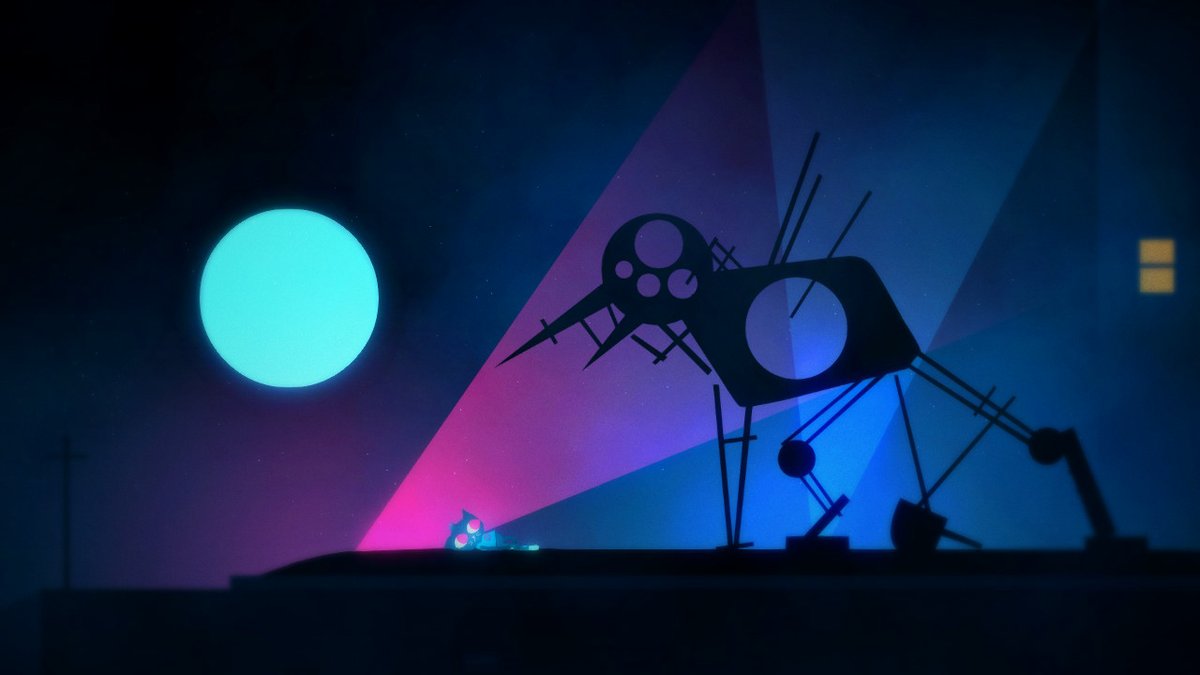Coming home, confronting your past, and enduring the growing pains of youth: it’s a story we’ve seen before. So why do people keep retelling it? What untold truths have we yet to discover in the depths of awkward adolescence?
Night in the Woods doesn’t break new ground, but it knows the well-traveled path. It tells a familiar story with its unique voice, a story that could only exist as a video game.

Welcome to Possum Springs
Night in the Woods tells a rather simple tale. But, like all great stories, it finds a way to tell it differently. A palpable sense of magic and offbeat reality work in tandem with its roster of Animal Crossing-like characters. Ethereal lights dance among wispy branches of wood as cats and crocodiles drink themselves into a forlorn stupor. Somewhere on a rooftop, a grinning bear peers into the heavens, seeking out myths and legends among the stars.
Possum Springs is a dying town, slowly strangling its inhabitants in complacency and mediocrity. Its day in the sunlight has long since passed. Ahead of it lies only the grey fog of uncertainty. The mines have closed, the factory has shut down, yet life moves on regardless.
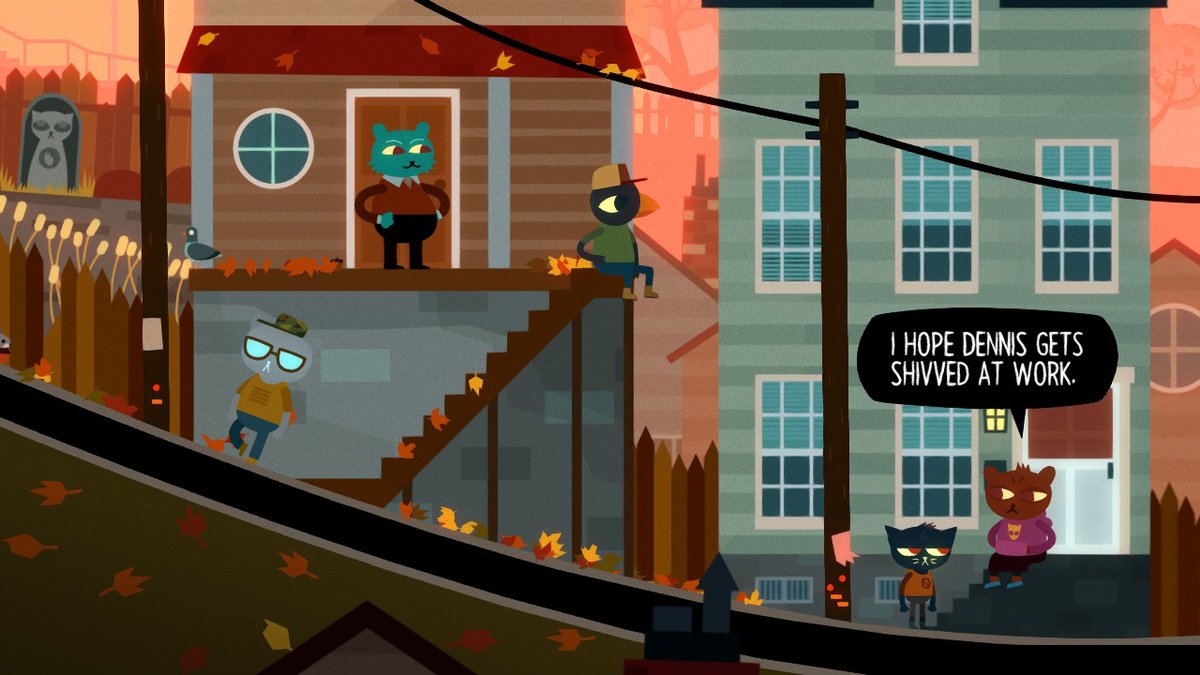
In Possum Springs lie the fears, insecurities, and hopelessness that we have all been prey to. We can’t choose where we’re born, nor can we choose to whom we’re born. For many of us, we simply work with the hand that we’re dealt.
Mae Borowski, the feline protagonist, struggles against her own troubled circumstances in order to carve her niche in the world. A 20-year-old college dropout, Mae is halfway between a rebellious punk teenager and a fledgling adult dealing with responsibility.
Although her return home promises a respite from the stress of the world, playing bass and having pizza parties are just momentary lulls in the storm. You can’t be a kid forever.
While Night in the Woods is ostensibly about Mae, she’s merely one part of the picture. The game features a wide cast of characters, each with their own small idiosyncrasies. They’re just odd enough to be endearing, while still retaining a very real humanity.

Storybook Sugarcoat
Night in the Woods deals in themes that are all too familiar, vague unsettling things like regret, aspirations, and interpersonal strife. Other narrative games, such as Life is Strange and Oxenfree have tackled these topics before. Yet Night in the Woods arguably strikes closer to home than either of them.
The game doesn’t try to hide the fact that it is, in fact, a game and that it is, in fact, fictional. Broad shapes and muted colors fill the landscape, implying and suggesting the idea of space rather than explicitly defining it. Walking, talking animals populate Possum Springs and go about the humdrum tedium of daily life. Construction workers toil away at the roads, Mae’s parents deal with depression and mortgages, while a lonely bear pours her heart out into despondent poetry.
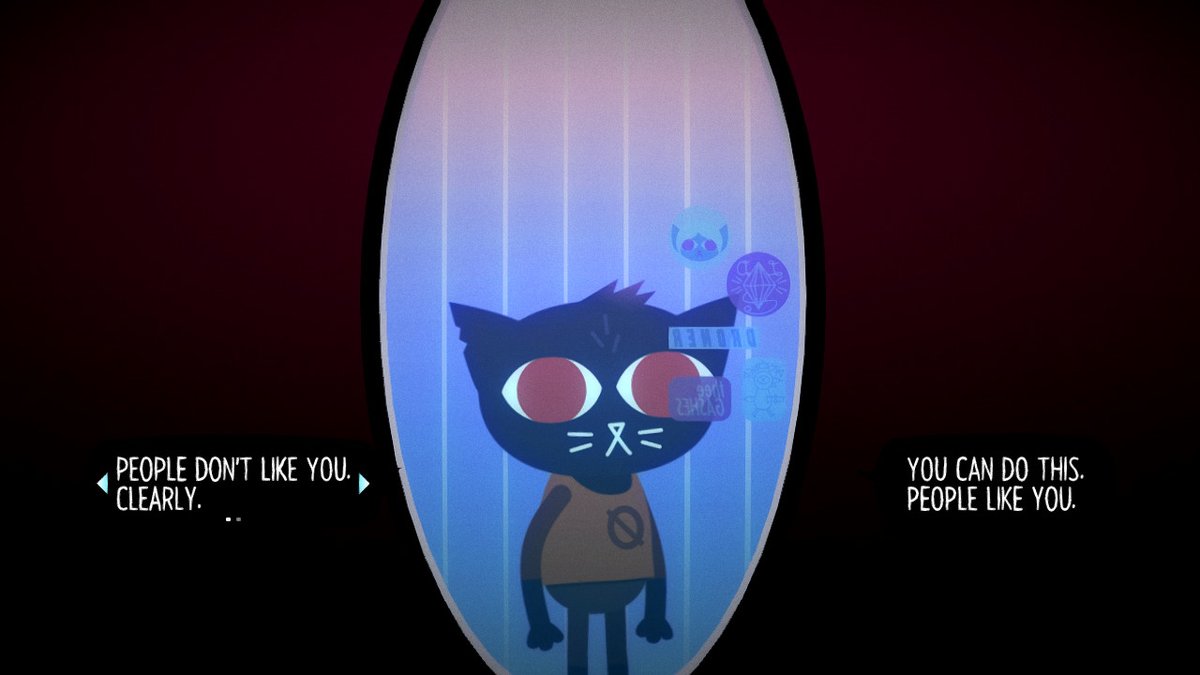
Night in the Woods creates an interesting dichotomy between its content and the way it chooses to present it. Dreamy synth keys punctuate Mae’s light steps through the slow fall of autumn colors as she makes her way to the Snack Falcon. Home offers comfort, solace from the terrifying reality that is adulthood.
But try as she might, Mae can’t escape the inevitable. The storybook quality of the game further highlights the slow creeping dread of the unknown that Mae and the rest of the town experience. Past their cute and fluffy exteriors are souls battered and bruised by the uncaring indifference of reality. They may not know what they want in life, but they yearn for it all the same.
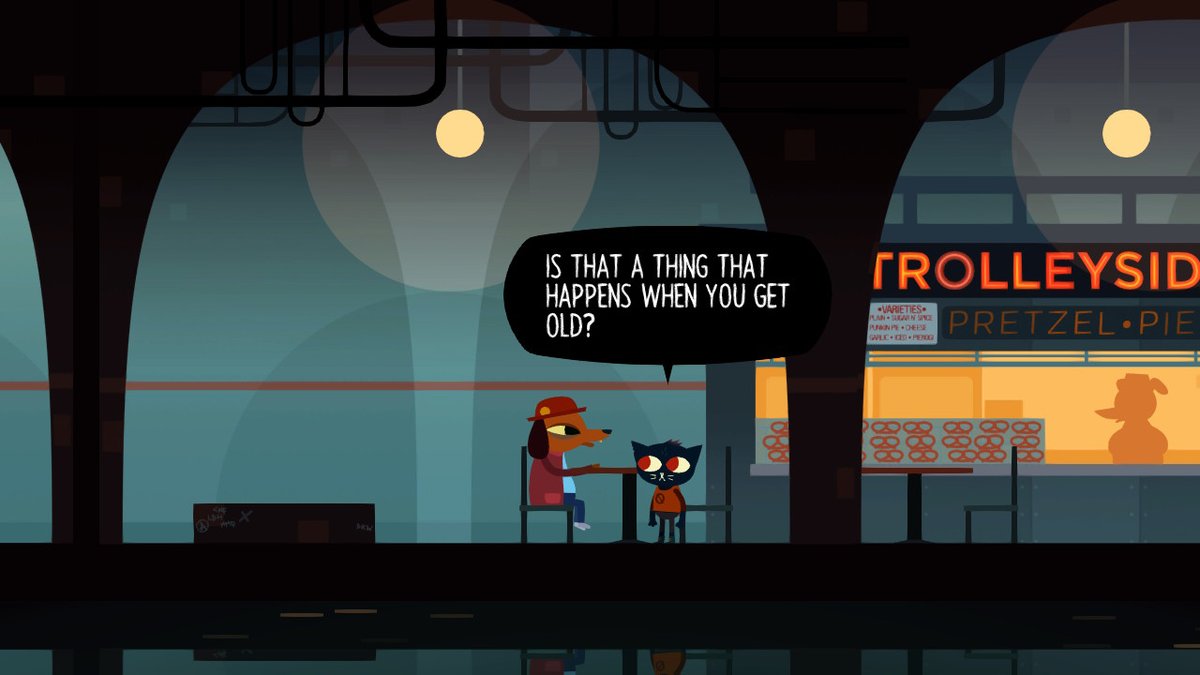
The Artifice of Illusion
In an interview with Goomba Stomp, Jonas Kaerlev, creator and lead developer of A Hat in Time, spoke about the concept of “gimmicks”. “For [our game]”, he said, “gimmicks are like, the core thing. And it doesn’t make it a gimmicky game, it just means that that gimmick often changes how you perceive a level entirely.” For Kaerlev, gimmicks were things like artificial counters and arbitrary statistics the player could keep track of.
Night in the Woods abides by much the same philosophy. It offers a surprisingly tactile experience by allowing Mae to interact with her world in small, yet meaningful ways. The simple act of moving around a wobbly hand to grab a can of soda from a vending machine feels far more “fun” than simply pressing a button.
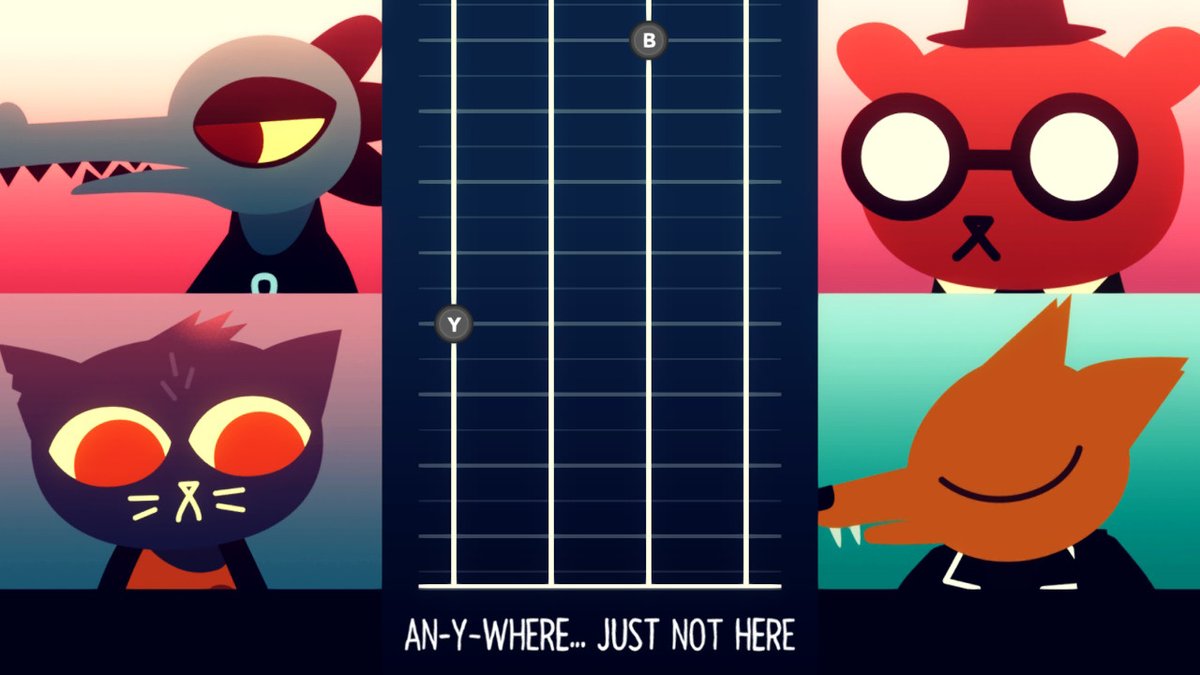
Much like how it treats its narrative, Night in the Woods embraces the fact that its world inhabits a fictional video game. Mae can jump onto trash cans and electric lines, with her third consecutive jump springing her higher into the air with a light “Hup!” Despite being story-heavy, the game does a wonderful job of offering a multitude of ways for the player to interact with the narrative.
Mini-games pop up throughout the game that impose their own rules and structure, while fitting perfectly within the context of the story. Whether she’s swinging full-force at fluorescent lights or stumbling through her bass on a song, Mae doesn’t just inhabit her world, she lives in it.
Pros
- Gorgeous visuals and soundtrack
- Large cast of fun and quirky characters
- Engagingly interactive narrative gameplay
- Earnest and heartfelt story that doesn’t rely on high-stakes drama
Cons
- Potentially slow and meandering pacing
- Shallow gameplay elements
- Objectives can be obtuse at times
- Minor technical issues on the Switch (slow-ish load times, visual stuttering with heavy VFX)
Summary
Night in the Woods is greater than the sum of its parts. The visuals, mini-games, and music create an engaging framework in which Mae and the rest of Possum Springs come to life. The cartoony aesthetic that the game adopts separates it from reality, while still appealing to the human experience. Whether or not you’re a fan of narrative games, chances are Night in the Woods will find some way to hit close to home.
